Hello, Laura from the future here (well…November 2020)! I’m popping in at the start of this post to say I’ve spent this week updating it since originally posting this in December 2018. You might remember that I moved this year + I’m living in a colder part of the country, so now more than ever, winter houseplant care is very important here at H P H. This is a post that I know some of you refer back to when the temperatures drop, so I’ve added some more winter care tips into the mix.
For this post I wanted to share some tips for caring for your houseplants over winter. Here at HPH HQ, we are in the midst of winter (I’m based in the UK) + some of the annual occurrences have begun; the death of my parlour palm in my bathroom in the space of two weeks because my radiator frazzles it from one angle, whilst my draughty window blasts cold air at it from another. My maidenhair fern is looking like a crispy mess that I will spare you the photo of for now… + the other ritualistic event is the leaf drop of my Alocasia amazonica. (note: this was from my old apartment 2 years ago… in my current place it’s even colder but there are less radiators so we shall see how the rest of the winter goes in new conditions…!) I wanted to share some advice at this juncture to offer some reassurance that there are some steps you can follow to make the winter months with your plants a little less intimidating.
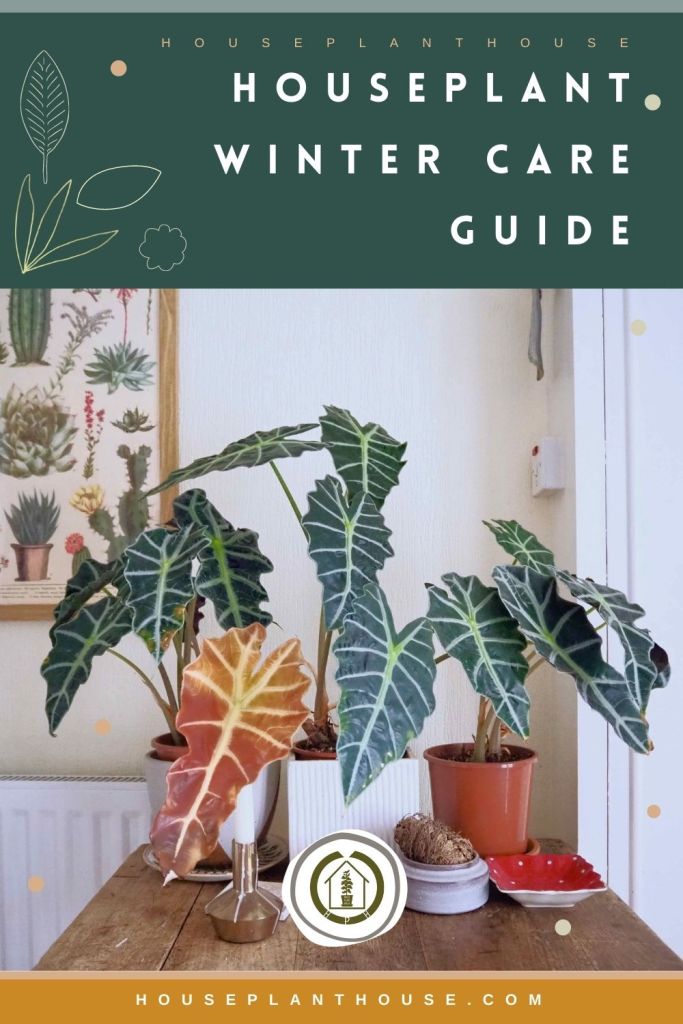
1. Hello dormancy
With the drop in temperatures + lower light levels, some plants take this as their cue for a rest period, or dormancy. I like to think of my plants going into hibernation in their own way; preserving their energy until Spring, where they will bounce back with vigour. When dormancy occurs, the main action you need to take is to reduce watering, generally by about 50% to ensure that your plants don’t awake with root root come Spring!
In general, the plants that go most noticeably dormant for winter in my collection are my oxalis triangularis (you can read a specific dormancy care guide here) + my ficus gang — I have a ficus lyrata bambino, a ficus benghalensis audrey + six ficus elastica of varying types. I counted them for writing this + it seems I hoard this type of plant — they are dotted all over my apartment! The tell tale signs of dormancy are that all growth slows down, almost to a standstill. This is quite commonly triggered by if there has been a cold snap; a sudden drop in temperature, or a first frost.
Different plants behave in different ways at this time + whilst my ficus plants just go quiet in the corner, some are more demonstrative, like my Alocasia. This time of year, the plant drops a few of its leaves (usually the oldest leaves) in a public display of fatigue, it really feels like it might as well just let out a big sigh. This is completely normal + part of the plants natural cycle, so don’t be alarmed if this happens to yours! In terms of watering here, I water mine from a plate (more on this below) about once a month.
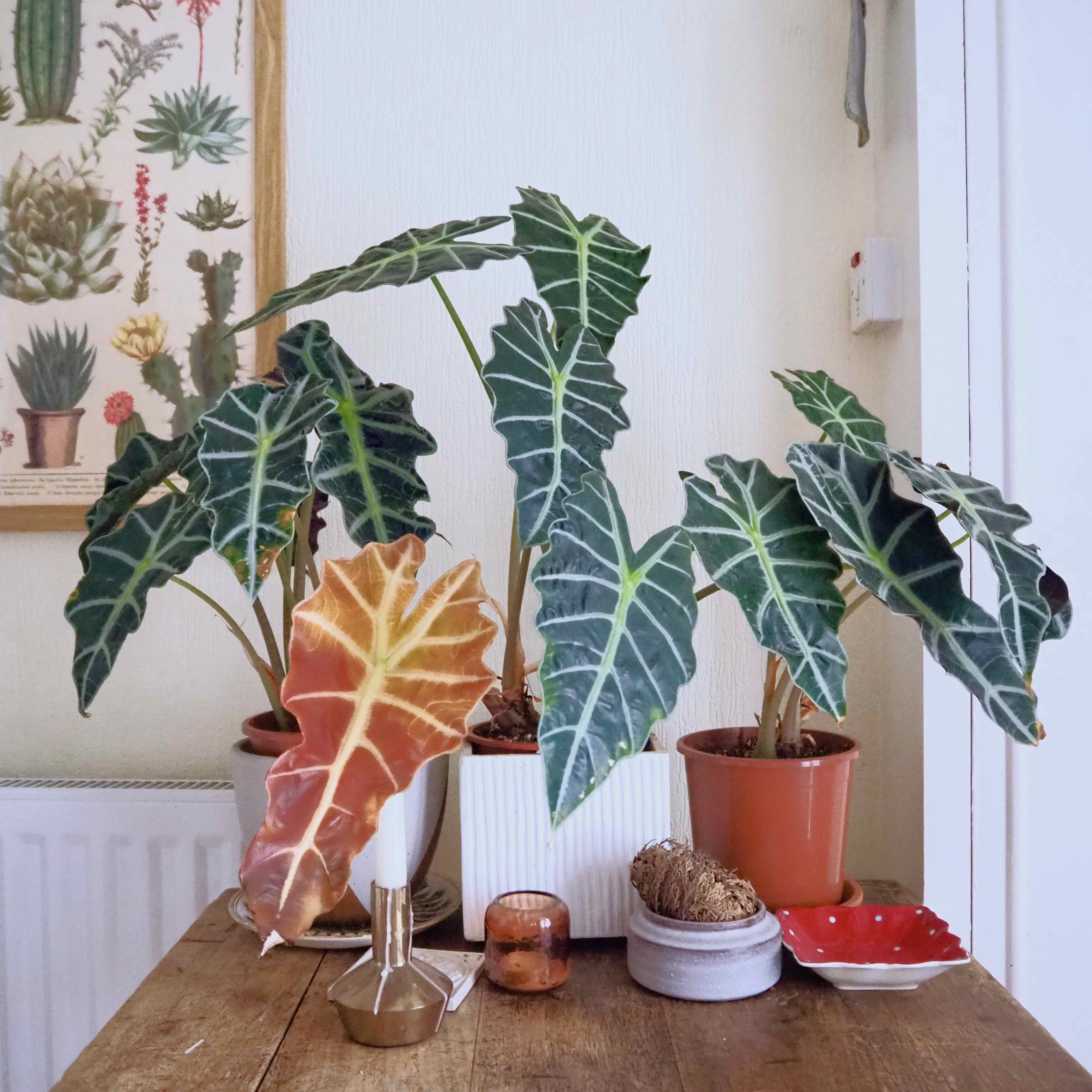
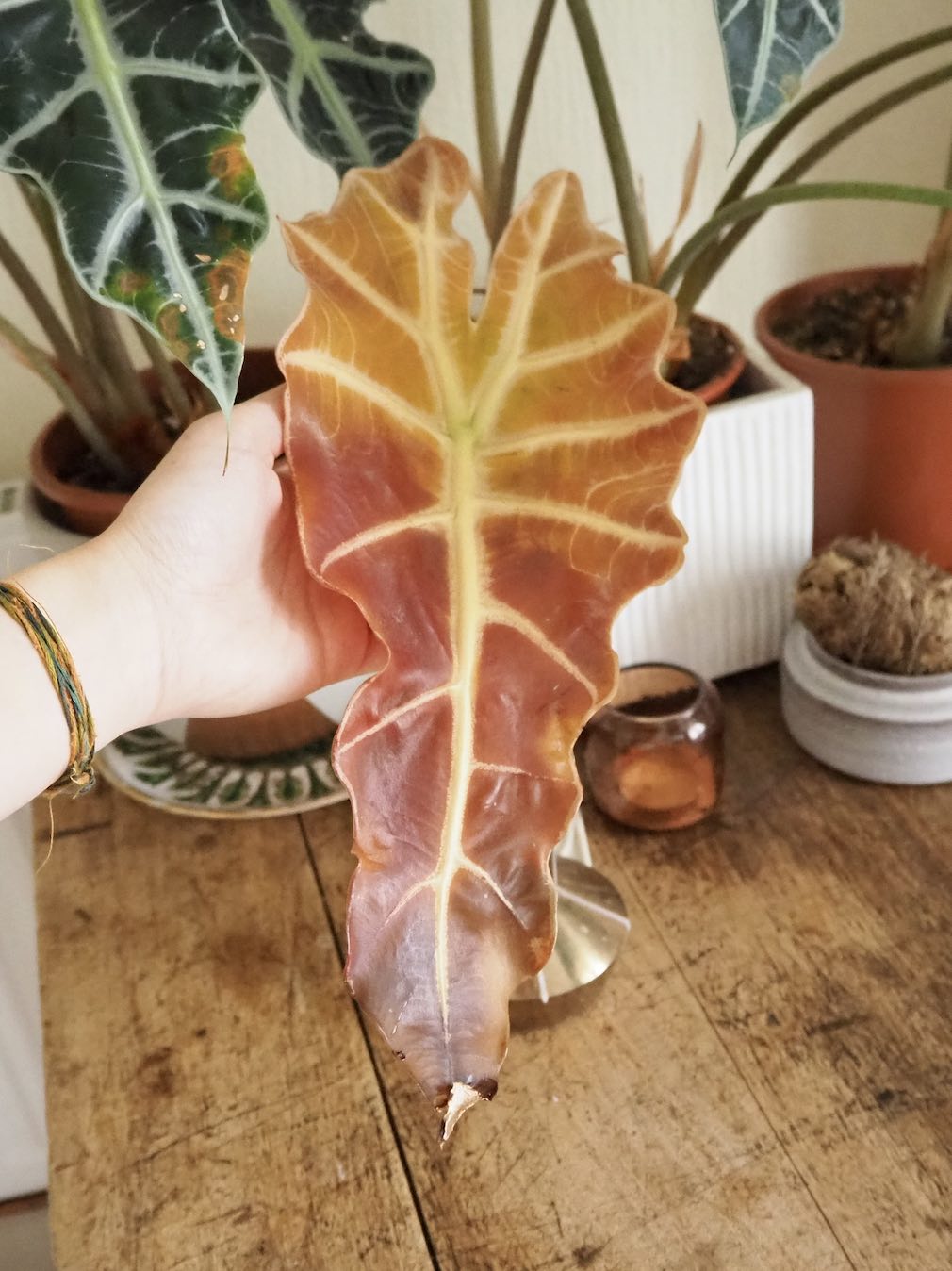
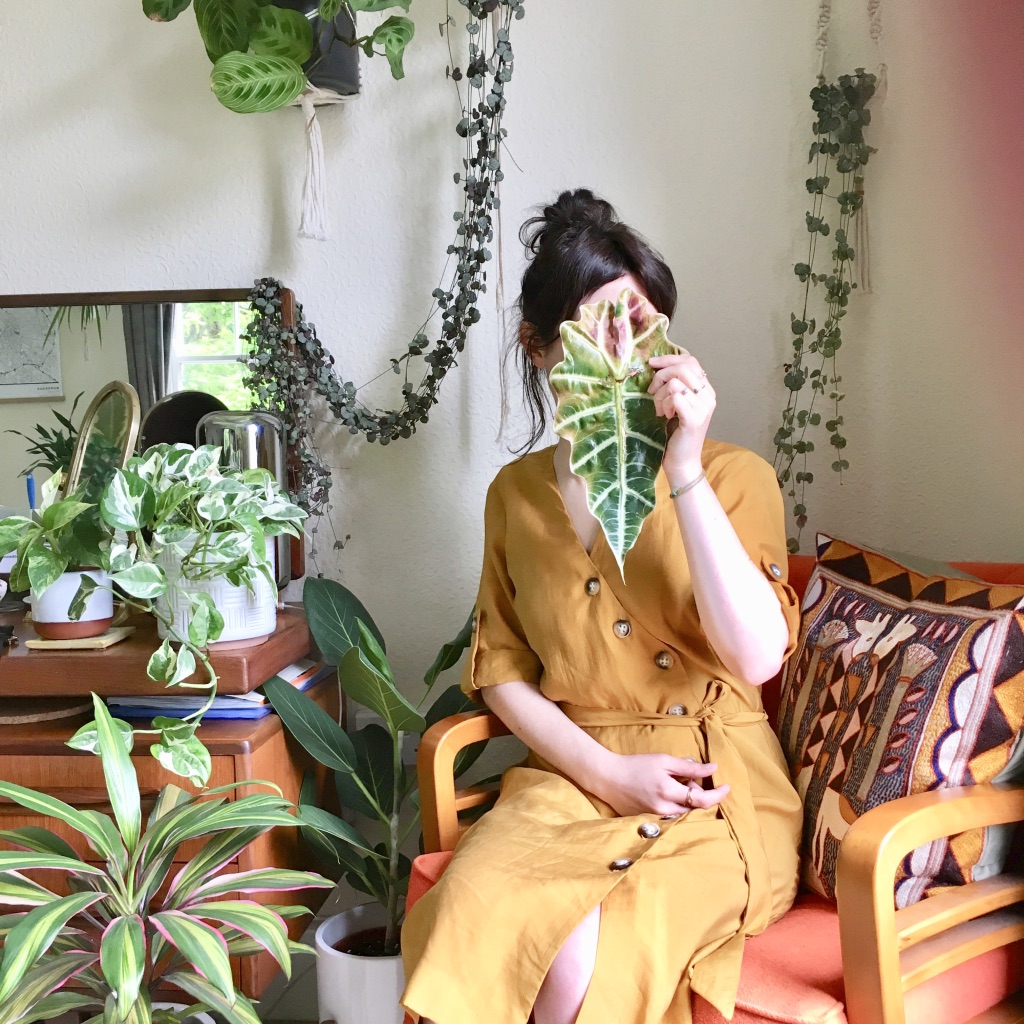
It’s worth noting that not all plants go dormant + sometimes the seasonal change will just slow things down a bit — slow growth, leaves finding it difficult to unfurl, generally smaller leaves + less fenestrations. Plants that fall into this category for me are my philodendrons, pothos + monstera.

2. Watering + Potting Mix
Over winter, once feeding has ceased (I don’t feed between October and March in my current location), my watering routine also changes to accommodate the different environmental conditions facing my houseplants. As a note here, if your climate is quite different to mine + you find your plants grow year-round, then more regular fertilising is fine. The easiest way to judge whether or not to feed is if your plant has new leaves growing (active growth). But if you are reading this guide, I’m guessing it’s currently cold where you are!
Overwatering in winter is the main reason for plant collapse, so step away from your watering cans + go make yourself a cup of tea instead! Generally, I only water my houseplants when the top 1—2 inches of the soil are dry.
If you struggle with getting houseplant watering right, I’d really recommend getting a hygrometer to check the moisture of your pots to ensure you aren’t overwatering, here’s the one I use. Side note: this is also a good piece of ‘houseplant gardening kit’ to give as a present — I got given mine a few years ago + still use it regularly. The other way of course is to stick your finger in the soil, but for beginner plant lovers, it can take a while to know what the right sort of moisture-levels are, so use in combination with a moisture meter + you will be able to teach yourself! With practice, you’ll become more confident in gauging what’s ‘normal’ for your plants this time of year — I obviously can’t give a set timing schedule as every home + plant is different. On that note, it’s not a great idea to water on a set day (especially in winter!) because plants have different requirements. A good idea to make your watering easier is to place plants with the same needs together. Still check before watering though! Spending time connecting with your houseplants (particularly during seasonal shifts) is an invaluable way to really get to know them + they will thank you for it.

Keep an eye out to make sure that the root ball doesn’t become compacted + hard to get adequate moisture into, it can be left sitting as an ‘island’ surrounded by compost. This can cause houseplants to fail if they are left this way for prolonged periods.
At this time of year, I am a keen advocate of watering my plants from below using watering plates + trays some of the time. Every few waterings, I’ll flush the plant right through with a shower for good measure — I also take this as an opportunity to clean the foliage + remove any dust build up. Plate watering does take more work but it can help prevent that layer of mildew that sometimes appears as a ‘film’ across compost from the excess moisture + cooler temperatures (more on that in a minute). Longer term, a soggy environment can also create a breeding ground for fungus gnats which is best avoided of course!
Going back to that issue of mildew again, prevention is better than cure + the aspect of plant care that goes hand in hand with watering is the type of potting mix your plants are in. If your plants are in a free-draining mix that is on the chunky side, this is much less likely to be an issue as the water will drain more quickly through the potting media. At this time of year, a heavy soil mix, lower levels of light + colder weather can be a headache-inducing combination, especially if you are a bit heavy handed with the watering can. In terms of soil, if your potting mix is too heavy, root rot can become a very real problem because the compost will be taking too long to dry out. A very dense mix can prevent the roots getting enough oxygen which can put them under considerable stress + cause them to rot. If the roots rot, your plant will start to deteriorate + unless caught early enough, the plant will die. I prefer to keep the majority of my houseplants in a free-draining potting mix year round because I’ve figured out a tailored blend of compost + soil amendments that have been keeping my plants not just happy but thriving too, here’s the blogpost all about my houseplant potting mix.

The way I water over winter for most of my plants is as follows: For my larger plants, I remove them from their cache pots onto a plate. I place the watering can nozzle close to the surface of the potting mix + pour through until water comes out onto the drip tray. I then fill the tray with tepid water + allow the plants to sit like this for 20-30 minutes.
Using tepid (room temperature) water is extremely important here, as well as improving absorption, it stops the roots going into shock. A few days before watering I will fill some large bottles, jugs, vases + anything else I can find with water + let them sit, which brings the water to room temperature gradually… the water that comes out of my taps are very cold in this new place! Some plants also get straw coloured patches on their leaves if water temperatures are too cold (I’ve got a blogpost about this linked here). If the water is absorbed quickly, I add some more and wait 10 more minutes. Shake off then return to cache pot.
Never water directly into the cache pot + don’t let the plant sit in water… this can lead to root rot. For my smaller pots + succulents, I sit groups of smaller pots in trays of water, as detailed above. Before winter sets in, it’s worth thinking about repotting some plants that struggle over winter in a light + well draining potting mix (as detailed above), or switch some into terracotta to help the soil dry out more quickly.

3. Humidity issues
It’s no secret that plants don’t like central heating, which at this time of year is pretty hard to avoid. So there are a few ways you can help — if you have the option of using a humidifier then your plants will definitely thank you for it! They have become a lot more affordable in recent years, but it’s worth noting that they aren’t suitable for all homes. With humidity averaging in my apartment around 50-60% in winter + 65-80% in Summer, this is not a major issue for me. You should be mindful about the age of your property, if damp is an issue + subsequently anything that could suffer adversely from increased moisture. I collect vintage furniture + getting mildew on the wood (especially teak) is an issue if the air is too damp.
It’s worth noting that misting is not an effective way of increasing the humidity as the effect is quite temporary (+ not as ‘deeply nourishing’ as a humidifier), but it’s a good way of keeping dust off the foliage + alongside giving my plants a shower every so often, it won’t harm them. Just be sure to use tepid water (not cold) + mist in the morning so that the water isn’t sitting on the leaves as the temperatures drop at night. Browning edges of your plant can be a sign that it’s not getting enough humidity + when a plant becomes weakened in this way over a long period of time, they can be more susceptible to pests such as spider mites + mealy bugs.
I find a pressure sprayer (like in the photo below) on my larger plants is just as effective when I can’t carry upstairs to the bath! (here’s the link):
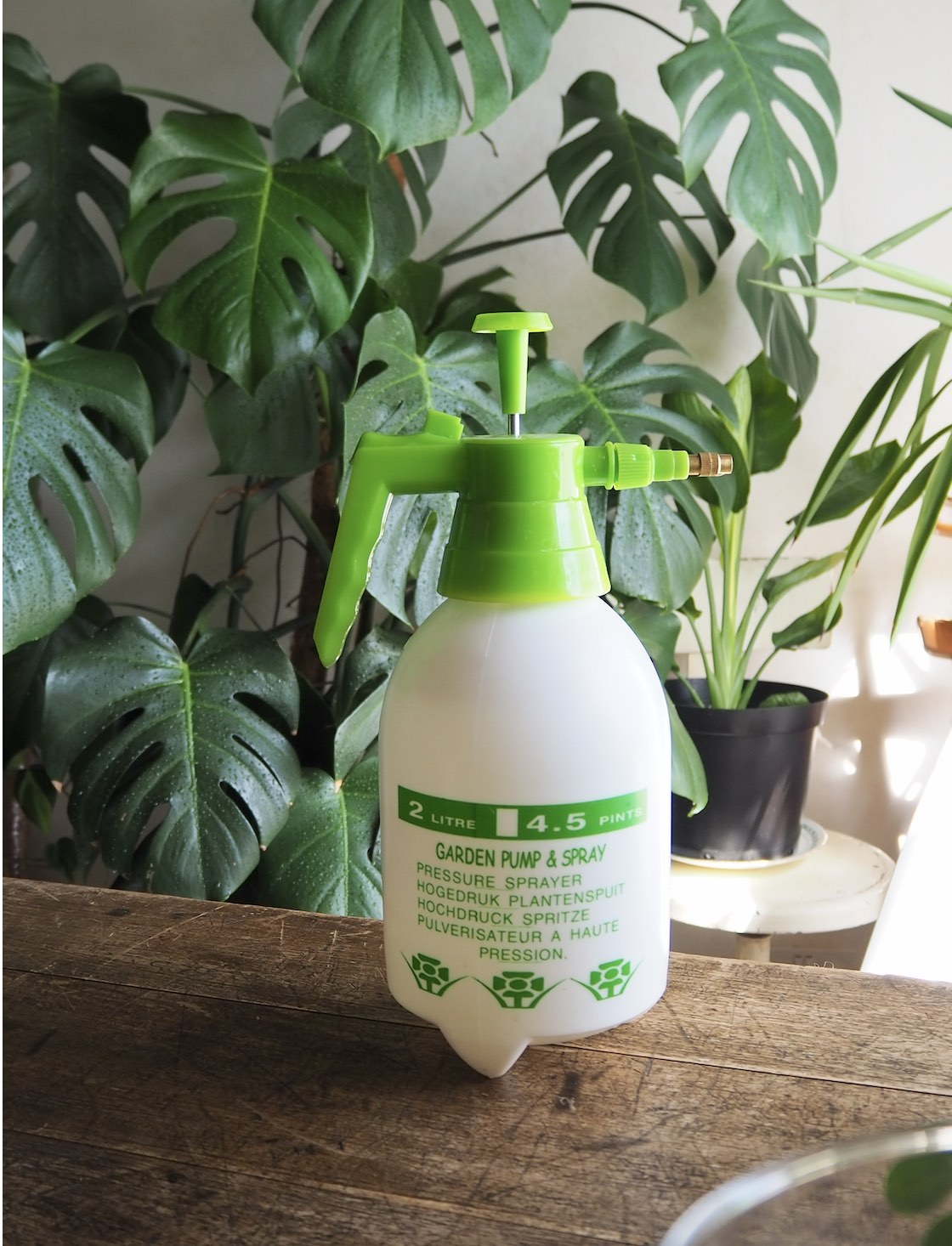
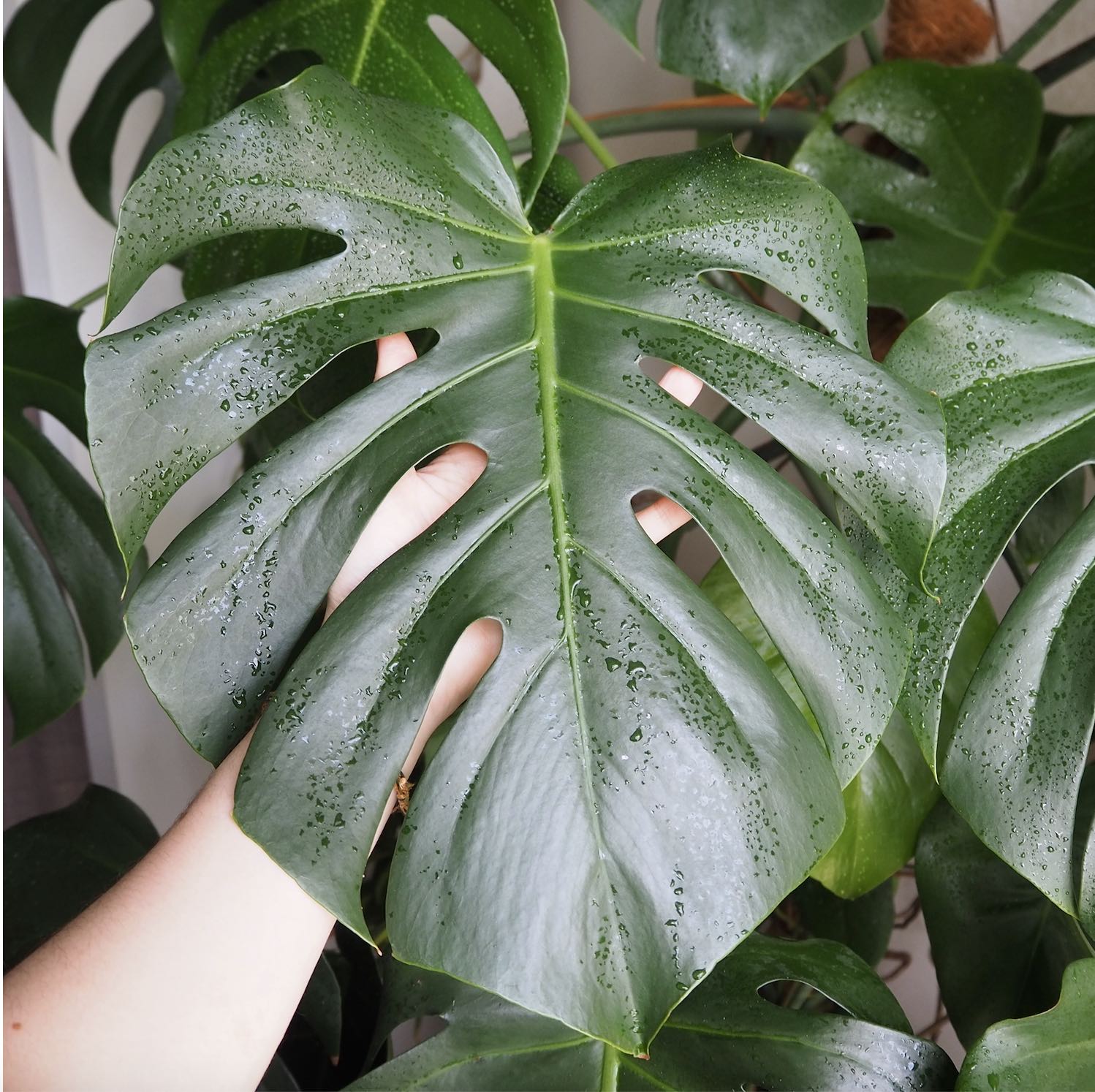
4. Succulent care
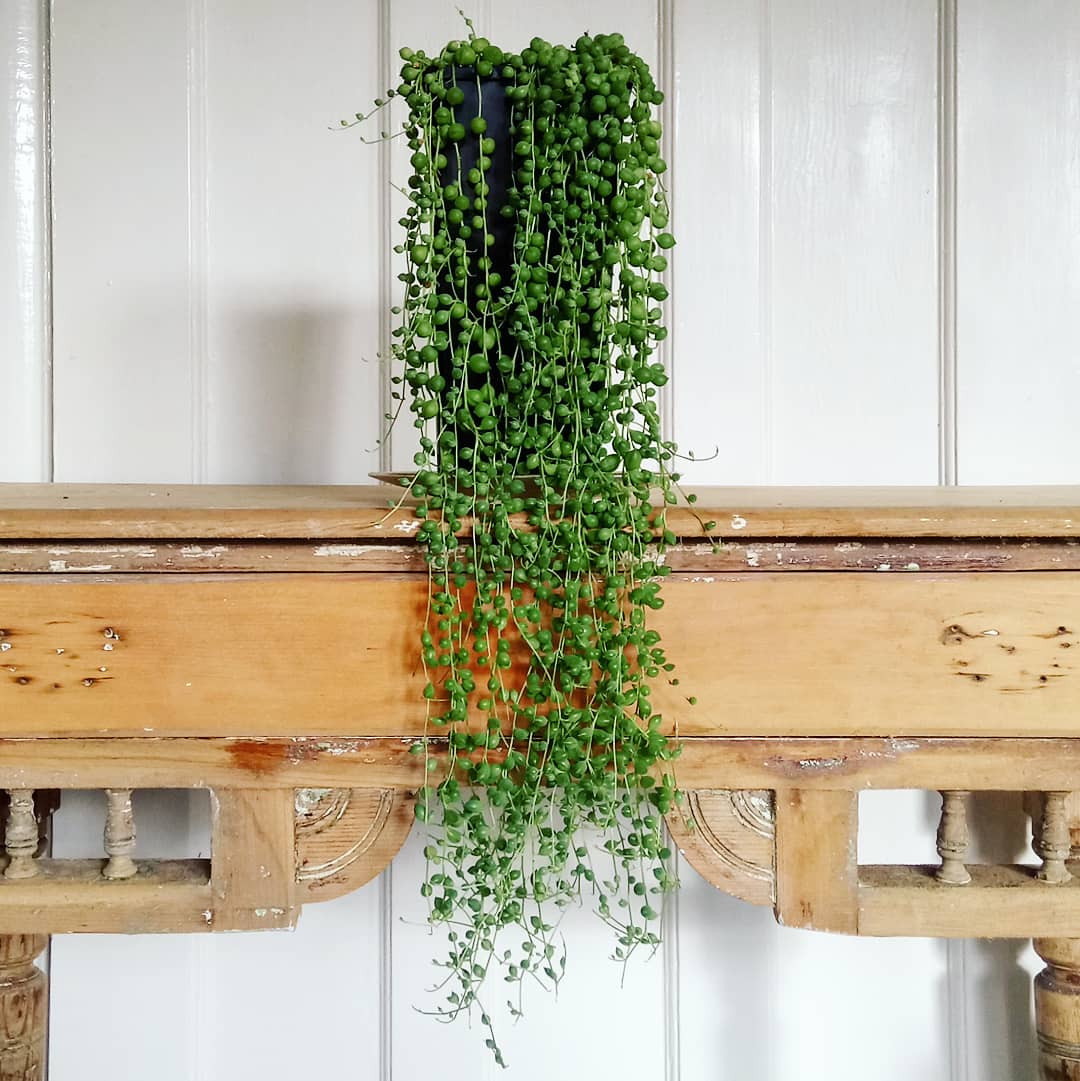
Succulents are quite low maintenance this time of year + are generally less hassle than foliage plants with humidity requirements. The main issue that you will encounter is stretched out growth, or etiolation, due the the plants literally reaching out for more light. This might not look the prettiest, but keeping the plants in a cool spot with indirect light can help make the stretching less extreme. Some will slow their growth right down as the temperatures declines. Be light with your watering too (they hardly need any water this time of year) + I always water from below on a plate with my succulents in winter.
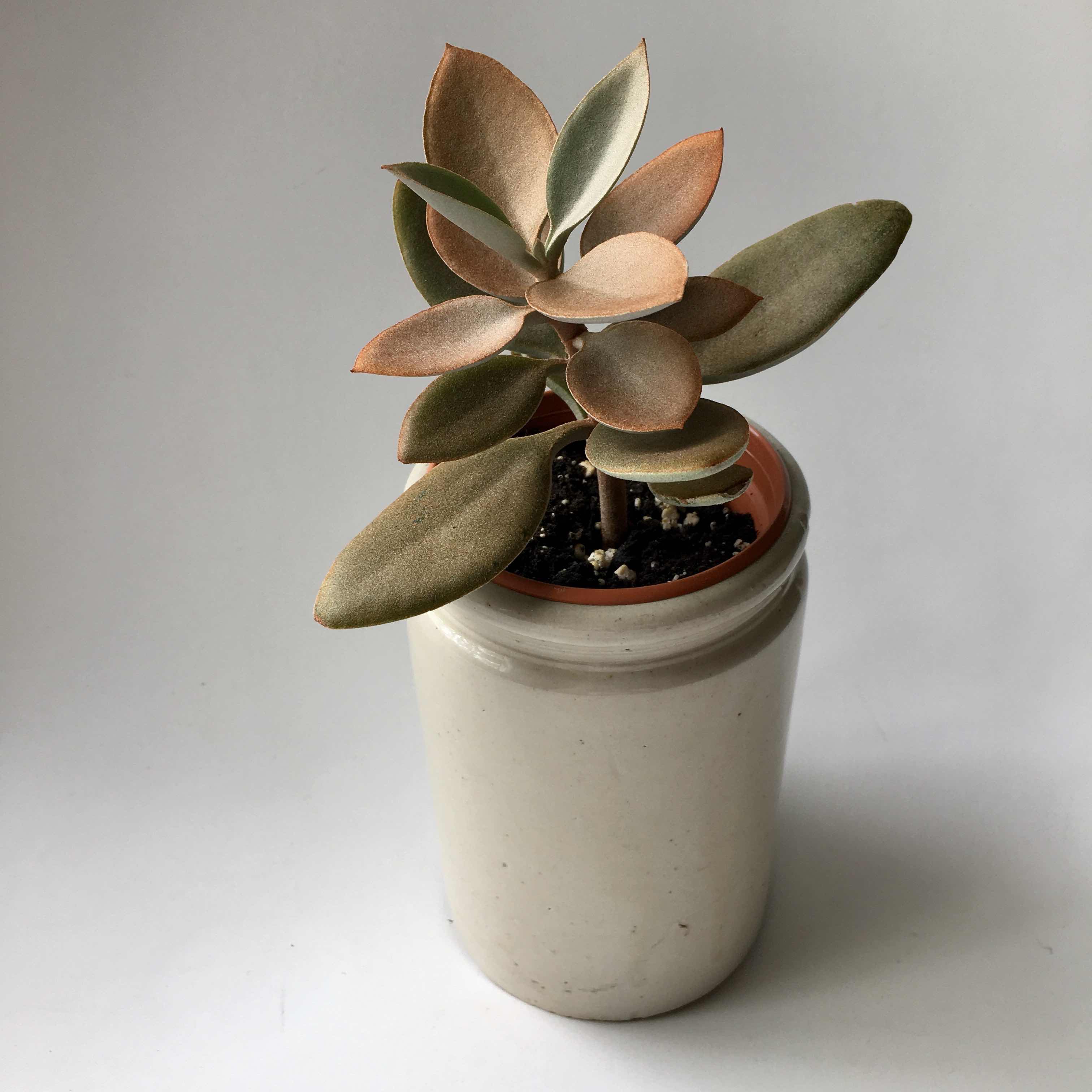

5. A note on Pilea plants
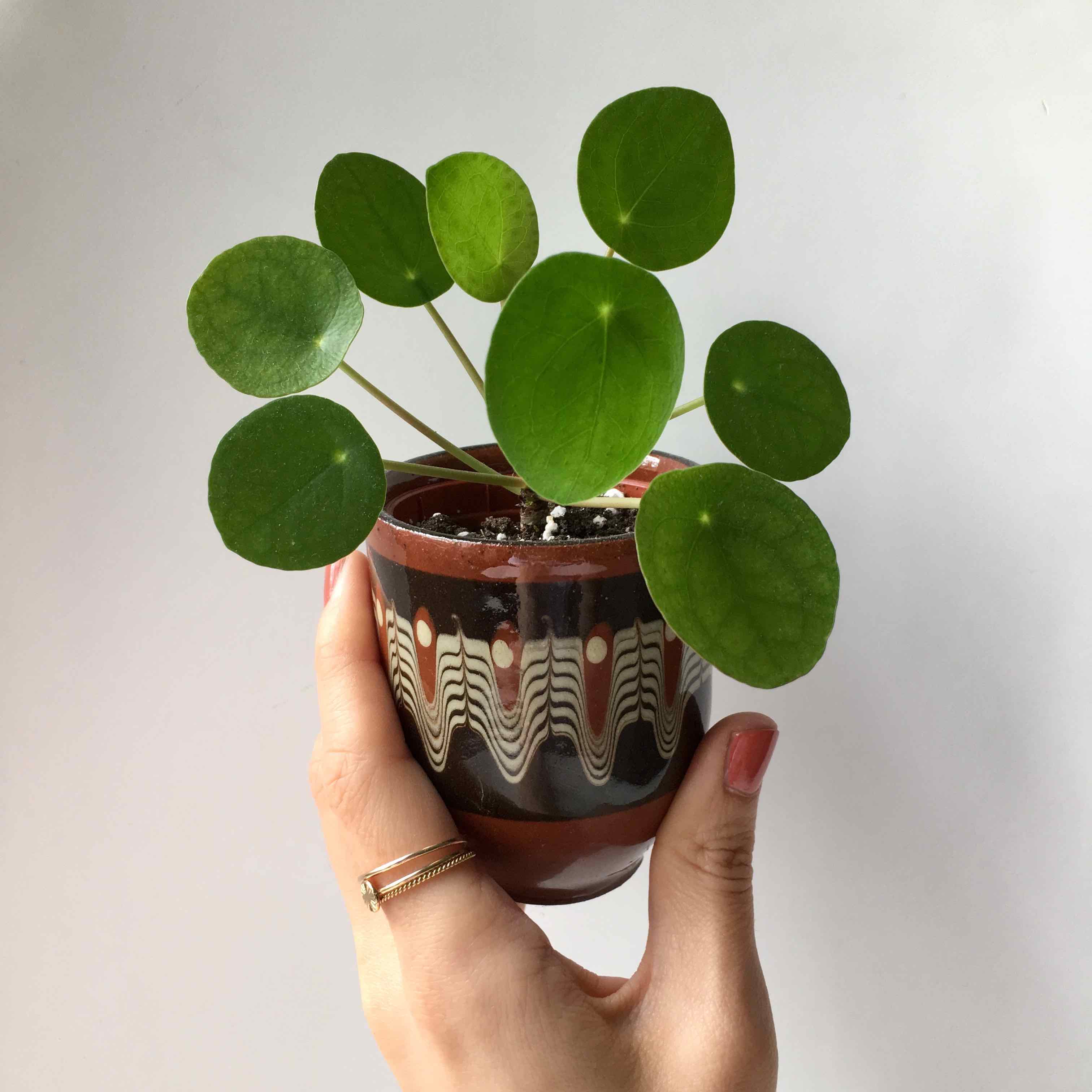

A specific mention to Pilea peperomioides which, lets face it, can be a slightly less glamorous plant over the winter months! You might notice some leaf yellowing + dropping, particularly in the lower leaves. If some of the more mature stems fall off, it’s nothing to worry about, but make sure to not forget about watering these lightly over winter, as I have found that ‘drooping’ is more likely if the soil is extremely dry. I also mist them weekly. which seems to help the leaves remain relatively flat and not ‘domed’ in shape. In my experience, I think they just enjoy to have a bit of moisture on their foliage now + again.
6. Consider grow lights
This is very much dependent on your location + also what type of space you have, but if you struggle with your plants over the winter months, adding in supplementary lighting to your plant care routine can really make a difference. I’m going into my third year of using grow lights with my houseplants + I am going to invest in a few more bulbs as the nights draw in here. The windowsills are bright but the light intensity drops off quite severely from there on in + the darker corners are in serious need of some extra illumination if I have any chance of keeping my plants looking their best. My old apartment, which was on the second floor actually felt brighter over winter when the leaves had dropped from the big trees outside my windows. I’ve got an entire blogpost on grow lights for happy houseplants here.


7. Chop + Propagate!
Alongside succulent etiolation, foliage plants might also suffer the same fate over winter time + can begin to look a little leggy. One of the easiest ways to resolve this issue is to chop and propagate! I do this often with my tradescantia gang (below) to keep my plant looking full (here’s a blogpost about making a new plant from cuttings). You can see the stems post-trim in water + even at this time of year, they root extremely easily in a week or so. For succulent propagation I have written a guide which you can find here.



I hope you have found this updated post helpful. We can get through Winter together over on H P H!
*Affiliate links are used in the post which means I can receive a (very) small amount of commission if you make a purchase — thank you for supporting my blog. I have bought all these products with my own money.

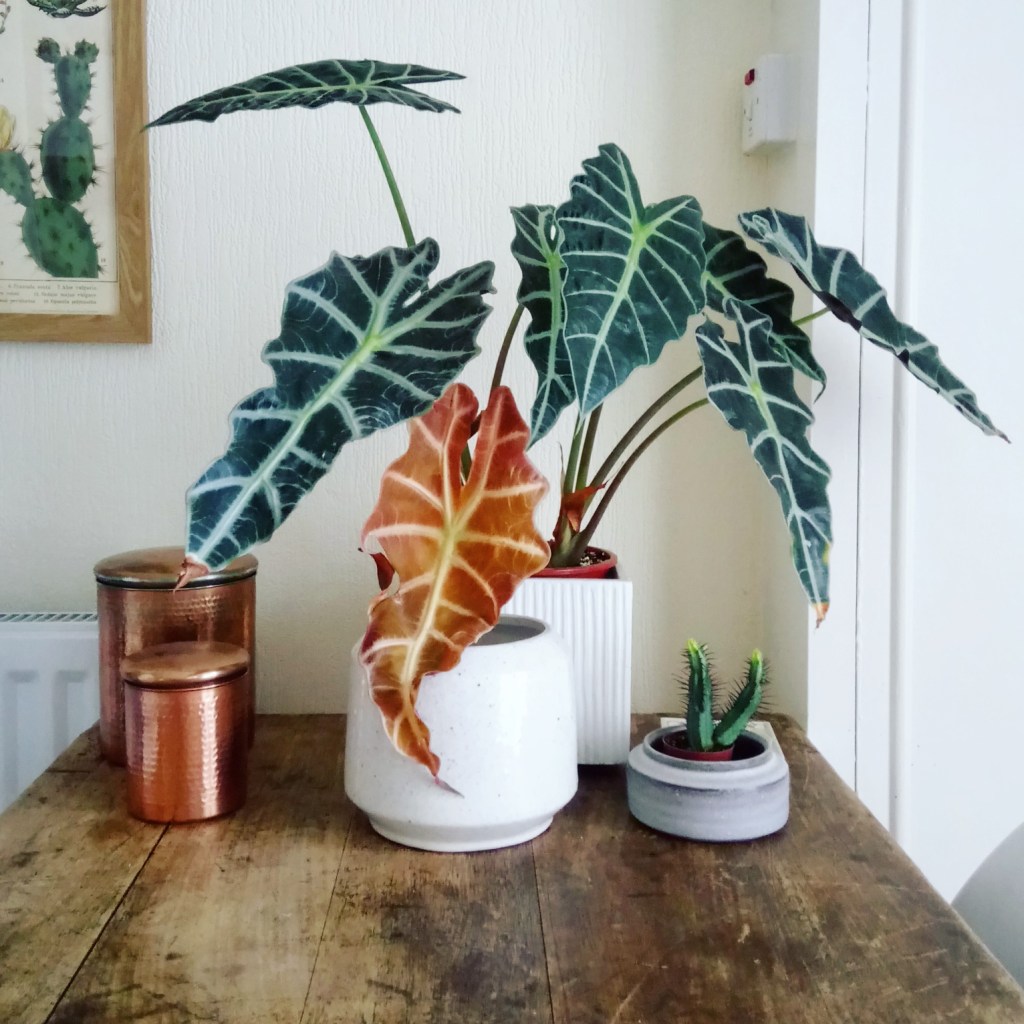
Leave a Reply